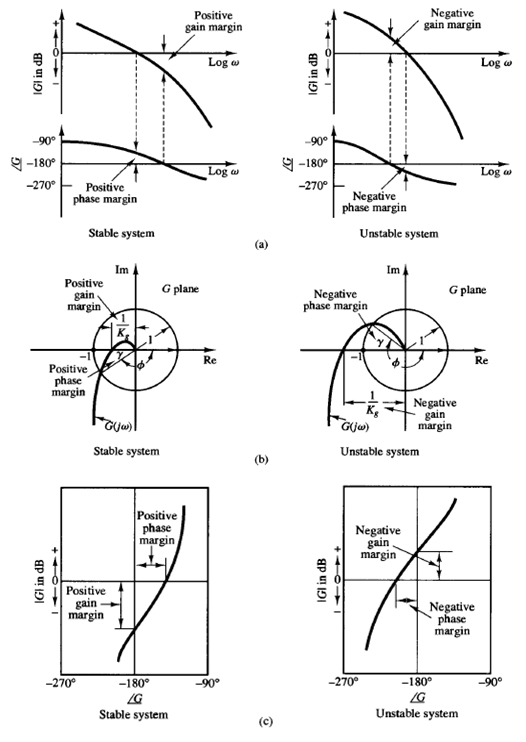Phase And Gain Margins
Phase and gain margins
The gain margin expressed in decibels is positive if Kg is greater than unity and negative if Kg is smaller than unity. Thus, a positive gain margin (in decibels) means that the system is stable, and a negative gain margin (in decibels) means that the system is unstable.

Fig: 2 Phase and gain margins of stable and unstable systems
(a) Bode diagrams; (b) polar plots; (c) log-magnitude versus phase plots.
The gain margin is shown in Figures 2(a), (b), and (c). For a stable minimum-phase system, the gain margin indicates how much the gain can be increased before the system becomes unstable. For an unstable system, the gain margin is indicative of how much the gain must be decreased to make the system stable.
The gain margin of a first- or second-order system is infinite since the polar plots for such systems do not cross the negative real axis. Thus, theoretically, first- or second order systems cannot be unstable. (Note, however, that so-called first- or second-order systems are only approximations in the sense that small time lags are neglected in deriving the system equations and are thus not truly first- or second-order systems. If these small lags are accounted for, the so-called first- or second-order systems may become unstable.)
It is noted that for a non-minimum-phase system with unstable open loop the stability condition will not be satisfied unless the G(jω) plot encircles the -1 j0 point. Hence, such a stable non-minimum-phase system will have negative phase and gain margins.